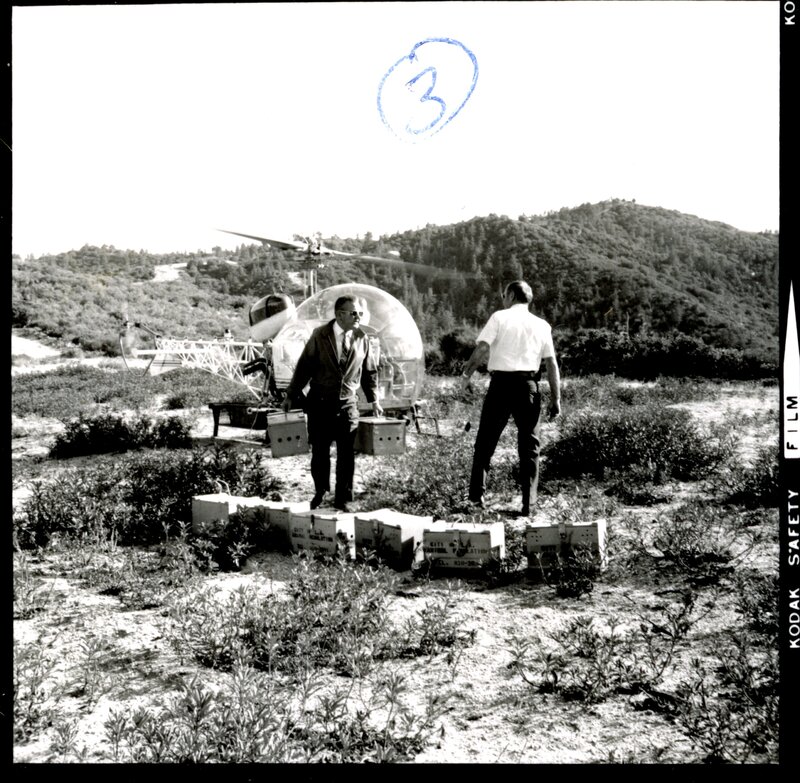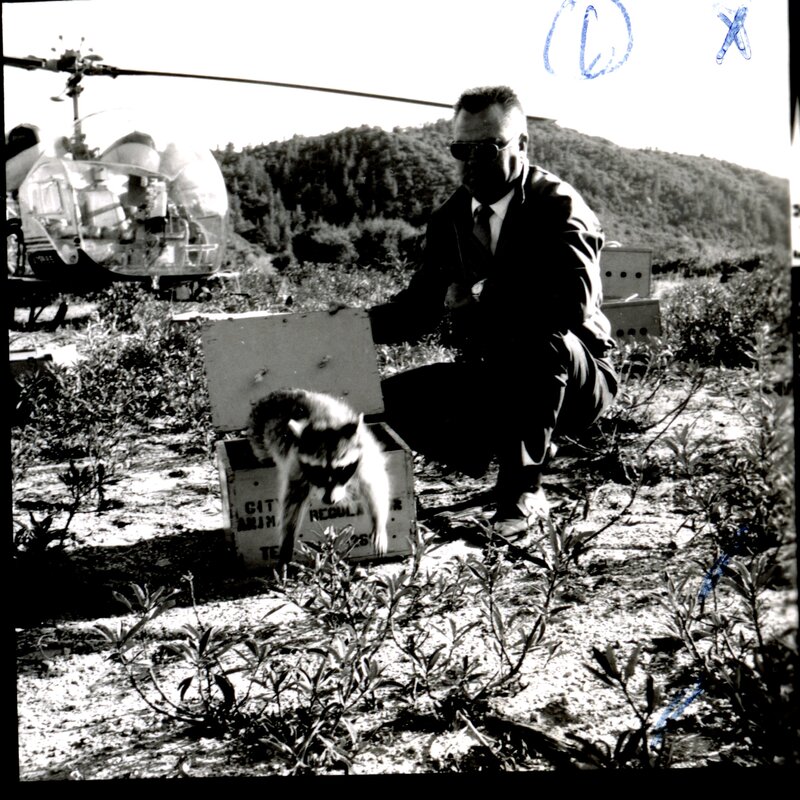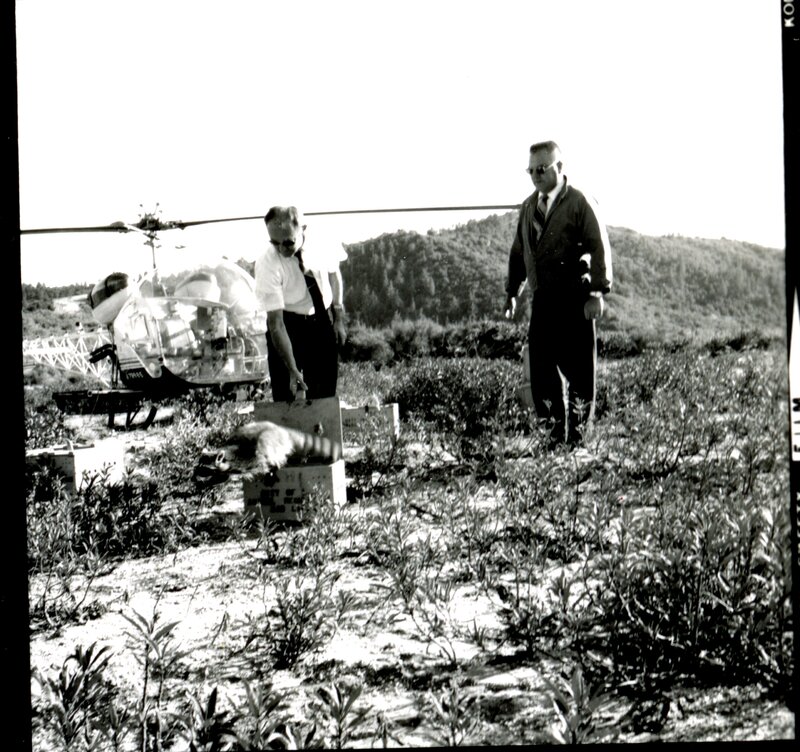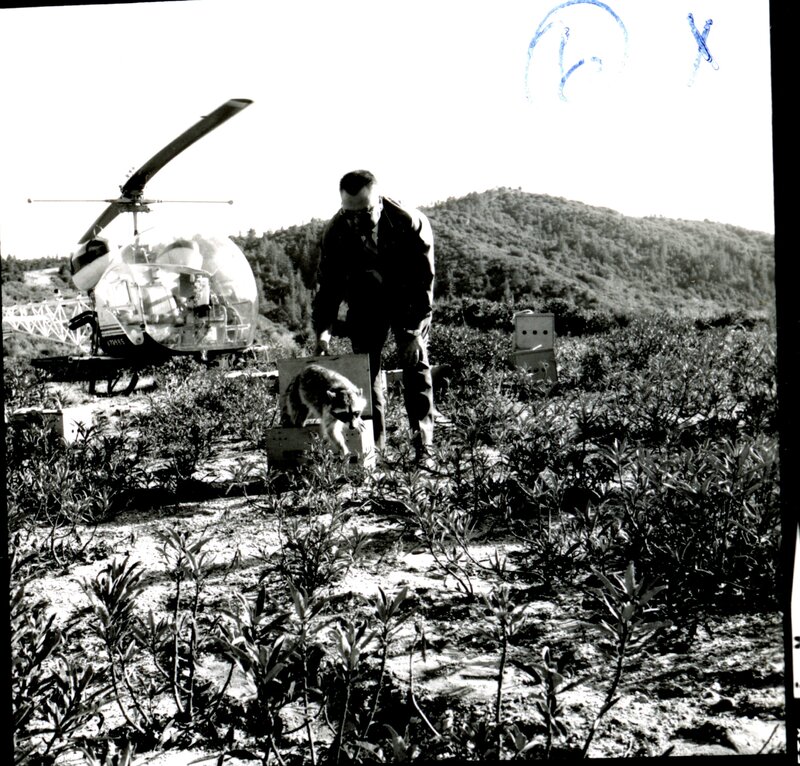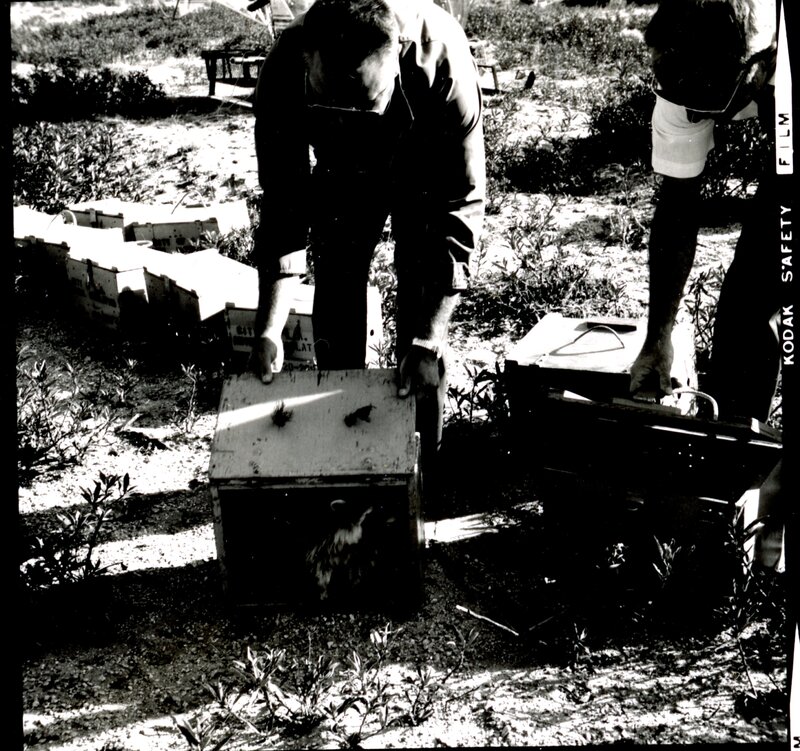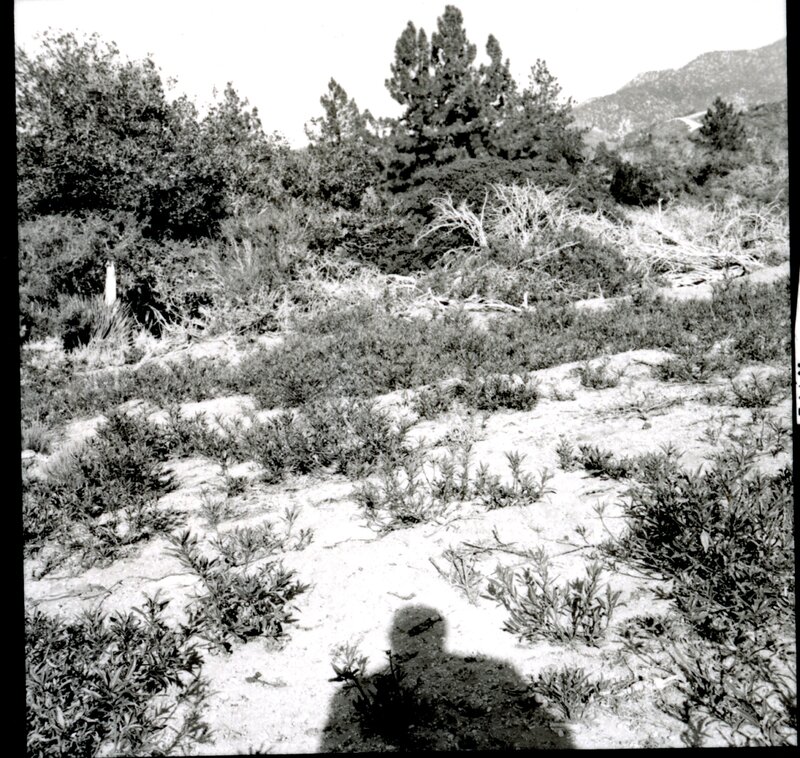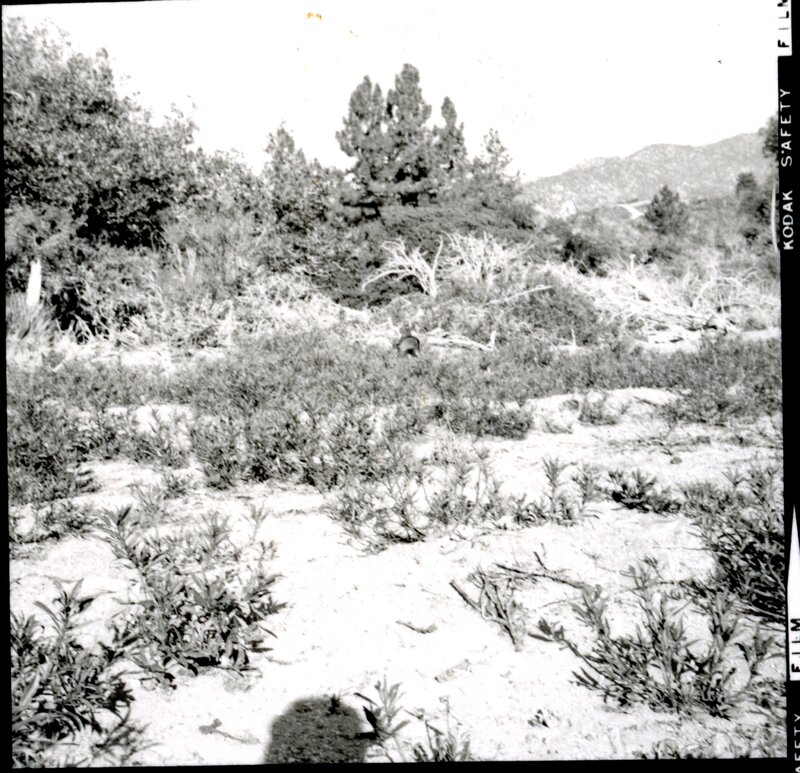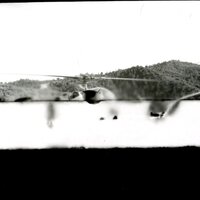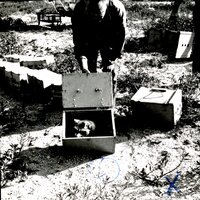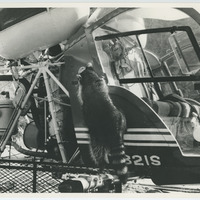The Los Angeles Animal Airlift
Raccoon on a Helicopter
Photo of a raccoon climbing a helicopter as part of the Animal Airlift program. Likely in the Angeles National forest after release from its container. Label on back: 7812098
The Los Angeles Animal Airlift Project began in 1969 and ended sometime in the mid-1990s. The beginnings of the program are much clearer than the end.
In the 1960s, when Los Angeles residents called the city about a troublesome creature in their midst—a raccoon in the attic, a possum in the backyard for example—the city would dispatch an officer from Department of Animal Regulation with a trap, they would trap the animal and return to the city shelter with it. Normally such animals would be euthanized. The airlift was conceived as an alternative: instead of killing the animals, the city placed them on a modified Bell 47 helicopter, flew to the Angeles National Forest about 35 miles away, and released the animals into remote locations.
They did this every two weeks, for over 20 years. An estimated 10,000 animals were moved in this way. It stopped sometime in the early 1990s. Anecdotes from Animal Services employees imply that the California Fish and Wildlife department caught wind of the project and shut it down. Other employees suggested that it ended because officers and pilots noticed that when the helicopter started to descend, they could see coyotes or mountain lions circling, preparing for this unintended buffet.
The duration of the Airlift parallels, almost exactly, the career of one of the most successful members of the Department of Animal Regulation. Robert Rush (1930-2013) was the General Manager (GM) of the Department from 1969 to 1992. Graduate of San Jose State, he was at Animal Services for 7 years prior, and served two tours of duty in the Army in the Korean War.
The first animal airlifts started right at the beginning of Robert Rush's appointment as GM in 1969, when in September "when helicopters where pressed into service" (B.34, p3; B.44.36 p2). Prior to this and as early as 1960, there is only a brief mention of a "conservation project" that likely involved relocating animals by driving and releasing them elsewhere .
A small regular cast of characters were involved in the first years of the Airlift: George "Wes" Mason (Animal Shelter Supervisor, later District Manager) and Ray Schutte, "Chief helicopter pilot for the City's Bureau of Transportation" (Board of Public Works) feature prominently in the early public relations materials. Jim McNamara was hired around 1967 as the public relations head of the department, and his stamp is on most of the early materials. Bill Burrud—a local television celebrity not an employee—also appears regularly as part of the promotional apparatus, especially in the creation of a 1970 film about the airlift. Later, a range of other Department employees appear in photos and documents as participants: Supervisor Thomas Walsh, Officers Dennis Kroeplin, Annetta Reeff, Eric Gardner, and Karen Cox. Leon Fisher and Larry Forbis are mentioned as employees of the Angeles National Forest who assisted with the airlift.

